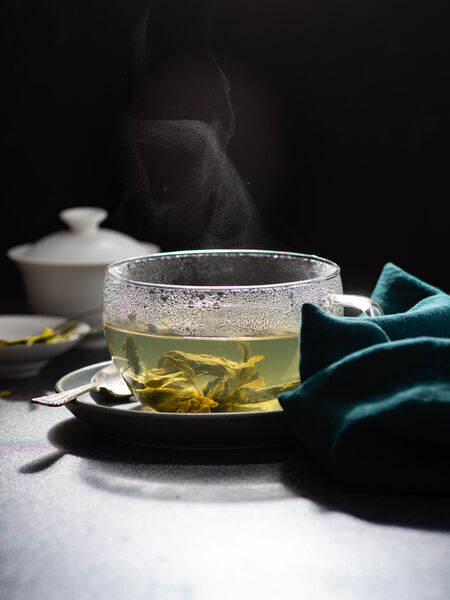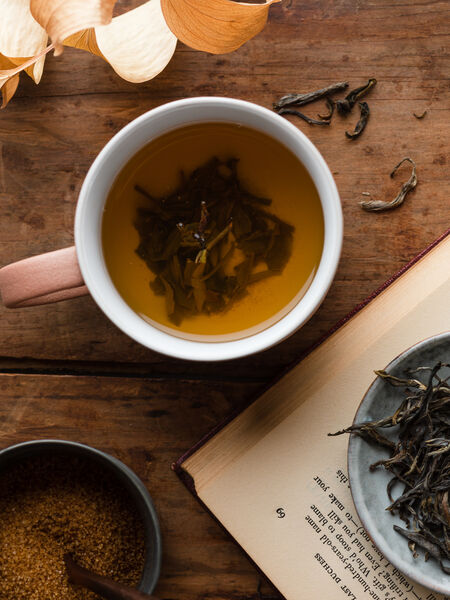Spring Tea Guide: From Darjeeling to Puerh


Spring has arrived! The sun is shining, flowers are blooming, and life has returned to the trees that shed their leaves in preparation for the long, cold winter.
Spring is also an important time in the tea world, with tea bushes just waiting for someone to pluck their leaves and turn them into delicious teas to be enjoyed after the cold of winter. Some of the finest teas in the world are harvested in Spring, and if you’re looking for a tea to grace your next tea party, what better tea to serve then one of these freshly made teas?
1. Bai Hou Yin Zhen
The silver bullet of tea! ...Make that Silver Needle. Harvested in Fuding, China in Early April on dry, sunny days (which aid in the withering process of white tea production), only the buds of the tea bush are used to create Bai Hou Yin Zhen, a tea beloved by so many white tea lovers. Often called “Silver Needle”, this tea has a mild, gentle flavor. Enjoy it on a warm, spring day when you want to take in the warmth of the sun.
2. Rohini First Flush
Darjeeling is often described as the Champagne of Teas, and with good reason: a proper Darjeeling is a fine experience. Traditionally black tea (though there are some white and oolong varieties) Darjeeling is gentle but still has the flavors and aromas characteristic of a black tea. Darjeeling can vary depending on when it’s harvested, with First and Second Flush being popular among fans. While some perfer Second Flush, First Flush Darjeelings are considered to be the finest. A First Flush Darjeeling, like Rohini First Flush, can be harvested anytime between March and April, in the early days of Spring. Rohini First Flush tea is green in appearance due to a lower amount of oxidation but still classified as a black tea. It has a light, floral flavor, perfect for viewing the newly bloomed flowers of Spring.
3. Tai Ping Hou Kui
Harvested in the early days of May, Hou Kui is a unique tea. Where most teas are infused for the brewing time and removed, Hou Kui is often enjoyed “Grandpa Style”, which involves putting the leaves into a cup, pouring hot water on top, and sipping it while it brews. Where a lot of teas might get bitter using this method, Hou Kui is mild enough to be enjoyed this way through multiple infusions over the entire tea session. Its leaves are also large enough that you won’t accidentally sip any of the leaf fragments while you sip. Sit out on the porch during a warm Spring Day: maybe even join your grandpa for some tea.
4. Ancient Tree Green Puerh
In the mountains of Yunnan on an early Spring day, the leaves that would eventually be turned into Ancient Tree Green Puerh are plucked. Often left out of the tea conversation is Puerh or fermented tea. There are two different kinds of Puerh: “Shou” which is baked in order to age the tea, and “Sheng” which is aged naturally, sometimes over decades. Most of the Puerhs found in stores are the Shou variety, which can be song, however Ancient Tree Green Puerh is a Sheng Puerh, which can be hard to find. This Spring, why not try a different kind of tea with Ancient Tree Green Puerh?
5. Shincha Gyokuro
Some of the finest Japanese green teas come from the very first harvest of the year. The leaves from that harvest are nutrient rich, developing all through Winter until they are picked in the Spring starting in mid-April. This first harvest is called “Shincha” (or “New Tea”). Gyokuro is one of Japan’s finest green teas, so it only makes sense that the best leaves go into producing this sweet grassy tea. Before harvest, the tea leaves for Gyokuro are shaded for about twenty days: this allows the tea to hold onto even more nutrients. This also creates the tea’s signature sweet flavor with a lower level of astringency than other Japanese green teas. A truly luxurious tea to enjoy fresh in spring.
Bonus Tea: Shincha Sencha
A cousin to Gyokuro, Sencha is one of the most popular teas in Japan and many enjoy a cup of it daily. Where Gyokuro is shaded twenty days before harvest, Sencha receives the full amount of sun which brings out a grassier flavor than Gyokuro. This Shincha Sencha is made with the first harvest of leaves, which creates a high quality tea with the kick of a sencha.
